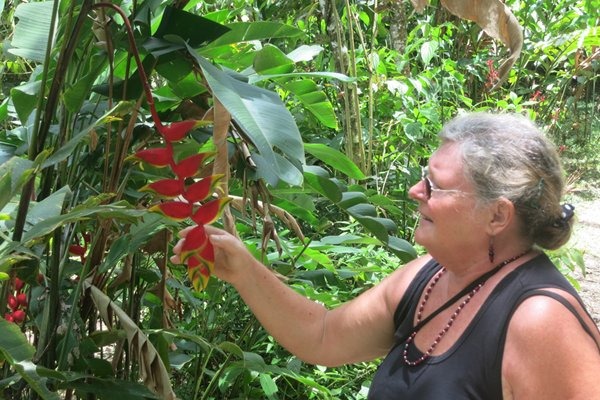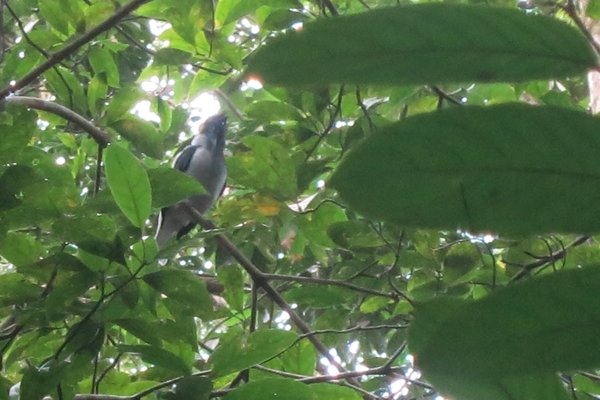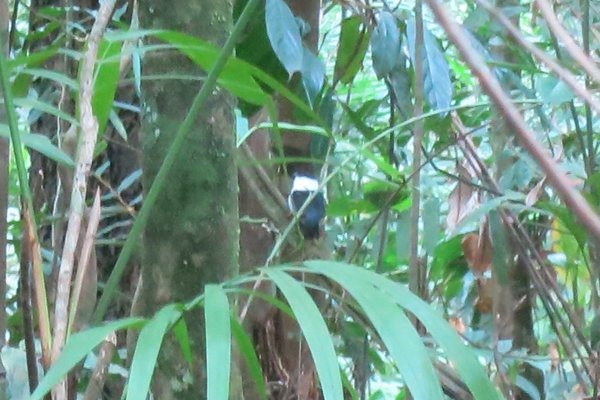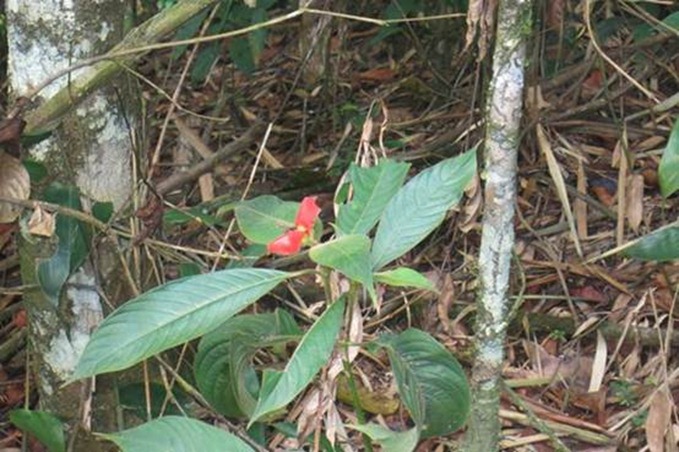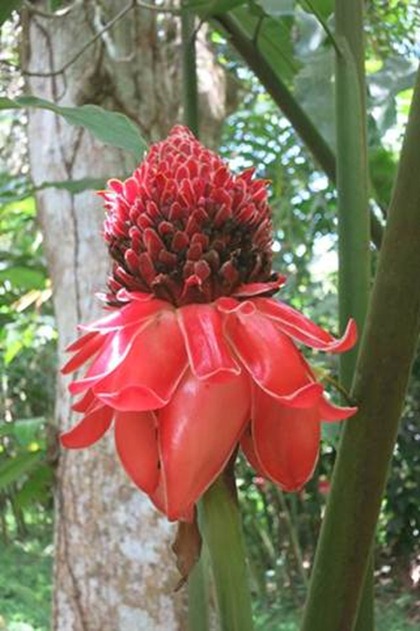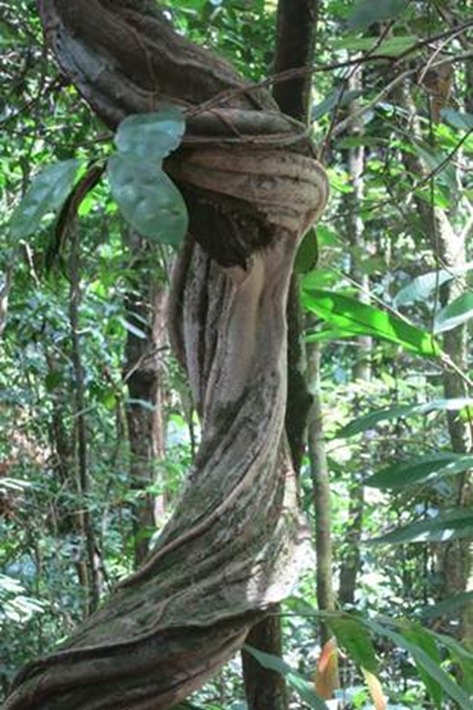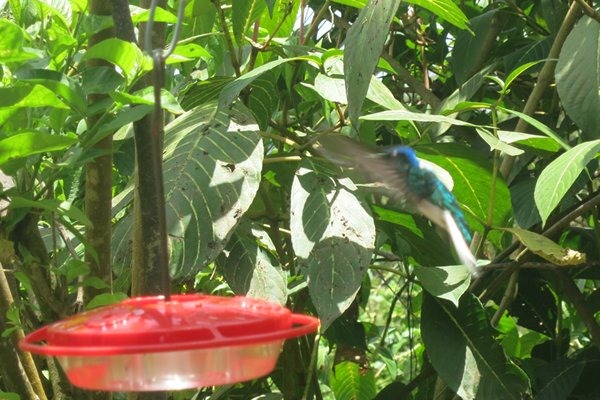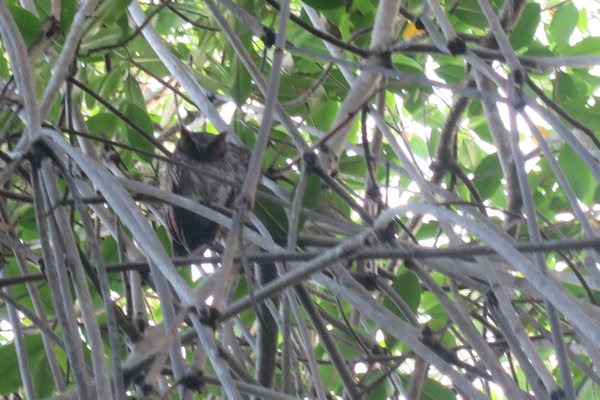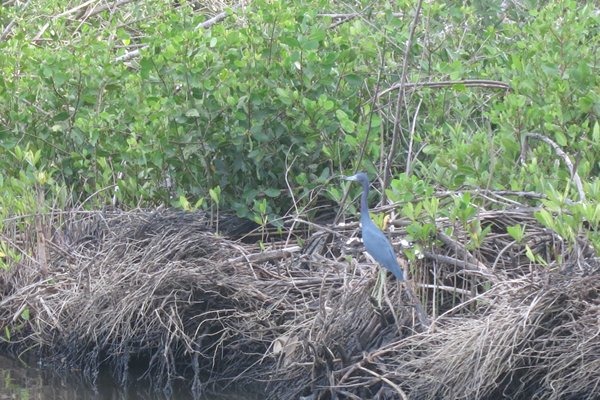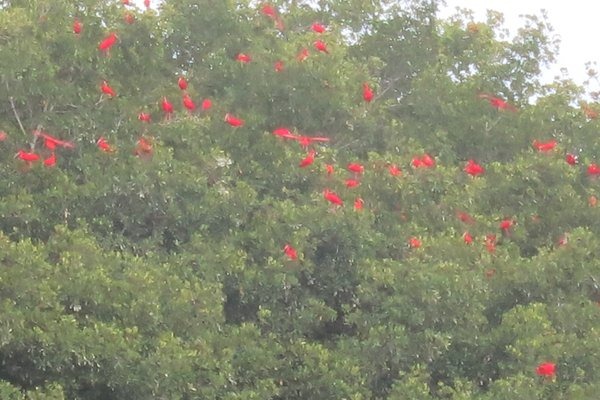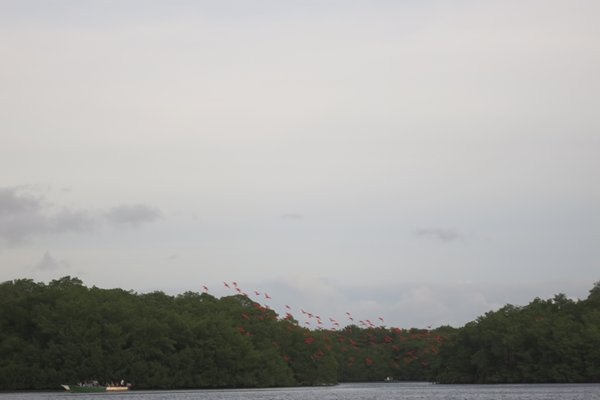Touring Trinidad

|
After a few days of boat work we decided to treat ourselves to a tour of the island. Trinidad is surprisingly developed and with an American feel to it. It appears that a lot of people have benefited from the revenues of the oil industry here. No doubt many have not been so fortunate but the traffic jams of cars returning from the beach after the bank holiday weekend could have been in many a more developed country.
Trinidad is different to the other Caribbean islands in many ways as it was once part of mainland Venezuela and much of the flora and fauna is the same. Happily the country has recognised that it has some wonderful environmental riches and there are a number of reserves. We visited two. The first was high in the mountainous interior where we were taken by a knowledgeable and informative guide to see some of their unique bird and insect life as well as wonderful plants, some we have seen elsewhere but some not at all.
The ballisier flower of the heliconium family, pollinated by bats and hummingbirds. It feels like polished leather.
Unfortunately the birds tend to like hiding and we found them difficult to catch on camera except for this noisy bellbird
And this small black and white mannekin. The male spends a lot of time cleaning a patch of earth below a tree in order to attract a mate with his housework prowess. If the female finds the male has not done a good enough job then she turns up her beak and finds a cleaner and tidier husband!
The plant life was rather more cooperative with the cameraman.
Hot lips……………mmmh
This waxen beauty is a red ginger lily sometimes called a torch lily; the blooms stand 3 to 5 feet high and are really large. Trinidad is starting to grow these commercially as it has identified markets abroad and is being supported by Russia to develop their marketing.
An ancient and enthusiastic liana capable of bringing down a tree
The hummingbirds were also less camera shy but no less difficult to catch thanks to those frantic wings
In the afternoon we visited a coastal reserve internationally renowned for its scarlet ibis roosts. Again we were lucky to have 2 excellent guides who really knew their stuff and were able to spot animals and birds we would never have seen. One of the guides knew every bird song and was able to bring them into our range by calling to them.
A screech owl
Blue heron amongst the mangrove roots
And lots of scarlet ibis coming from far and wide for a safe roost amongst the ancient mangroves.
Sadly we have no really good shots as the light was failing. The Ibis return to the lagoons of Mangroves from their feeding grounds on the marshes just as the sun is lowering in the sky. However, the spectacle of masses of such brightly coloured birds descending from the evening sky in their hordes was unforgettable.
S/Y Gryphon
II |
